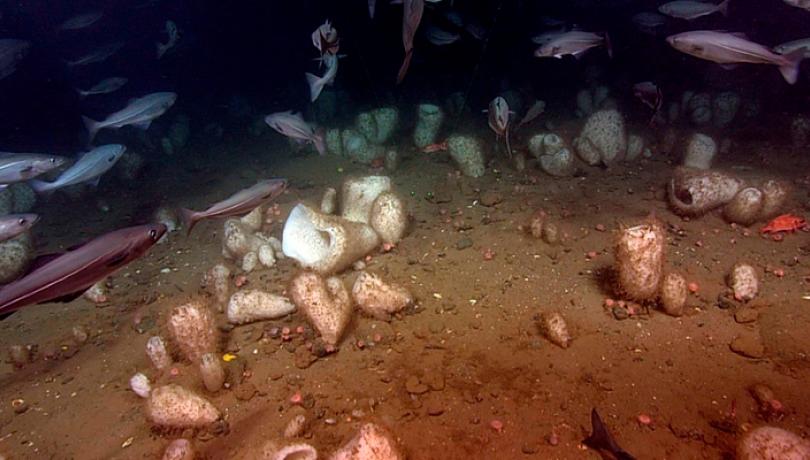A study with researchers from CEAB and ICM, both centres of CSIC, reveals that marine sponges, the oldest group of animals on the planet, contribute significantly to one of the fundamental biogeochemical cycles of the ocean: the silicon cycle. Until now, it was believed that the main sinks of silicon occurred through the burial of diatoms, but according to the new results, published in Nature Geosciences, skeletons of marine sponges are also important sinks of silicon in the global ocean.

A study with researchers from CEAB and ICM, both centres of CSIC, reveals that marine sponges, the oldest group of animals on the planet, contribute significantly to one of the fundamental biogeochemical cycles of the ocean: the silicon cycle. Until now, it was believed that the main sinks of silicon occurred through the burial of diatoms, but according to the new results, published in Nature Geosciences, skeletons of marine sponges are also important sinks of silicon in the global ocean.
Silicon is one of the most abundant chemical elements in the universe and, after oxygen, the second one on Earth. In the ocean, it is part of sediments, minerals and rocks and, more importantly, it occurs dissolved in the seawater. “This dissolved silicon plays a key role in the ecological functioning of the ocean. Among other functions, it is necessary for the growth of diatoms, a type of microalgae characterized by a siliceous envelope. Diatoms are the essential food of many other marine organisms"explains Manuel Maldonado, co-author of the study and researcher at the Center for Advanced Studies of Blanes (CEAB).
The dissolved silicon promotes the abundance of diatoms, which in turn increases the primary production of the ocean through the photosynthesis of these microalgae, favoring the development of the marine food chain and the abundance of animal life. The photosynthesis performed by diatoms also involves the consumption of large amounts of CO2.
"Therefore, the levels of dissolved silicon modulate the ability of the ocean to sequester atmospheric CO2 and mitigate global warming, all through the mediation of diatoms," says Maldonado.
Silicon circulates through the global ocean in a state of equilibrium: the amount of dissolved silicon that enters the ocean every year is equivalent to that which leaves, so that the amount of silicon available for the growth of organisms is always the same. If the equilibrium between silicon inputs and outputs in the global oceans broke, a major alteration of the processes of ocean primary productivity and sequestration of atmospheric CO2 would be unchained.
Recent discoveries of important silicon inputs in the ocean through ground water and the melting of glaciers and polar ice caps has raised the budget of the inputs relative to the outputs, suggesting that the internal equilibrium could already be broken.
“This study stimates that sponges are responsible for burying approximately 48 million tons of silicon every year, a process that happens when the skeletal pieces of death sponges sink and bury in the sediments. This discovery increases the previously known value for the biological sink of silicon of the ocean by 28%”, Maldonado explains.
Dark silica
The study also establishes a new conceptual framework: the "dark silica". This defines the siliceous skeletons produced in disconnection of photosynthesis, without involving CO2 consumption and all this in oceanic environments lacking sunlight, where diatoms cannot exist. “Therefore, the quantification of dark silica, carried out for the first time through this study, has not only helped to clarify that the inputs and outputs of the silicon marine cycle are currently in equilibrium, but also introduces the idea for future research that the functional connections between the carbon and silicon cycles of the ocean are more complex than previously thought, ”concludes Maldonado.
The project counted with the participation of Gemma Ercilla, researcher at the Institute of Marine Sciences (ICM-CSIC) involved in the collection, selection and preservation of sediments for the study; and Aude Leynaert, from the University of Brest (France), among others. The global study has been funded by two consecutive projects of the Spanish Government and a European project H2020 (SponGES).
Source: Manuel Maldonado, María López-Acosta, Cèlia Sitjà, Marta García-Puig, Cristina Galobart, Gemma Ercilla and Aude Leynaert. “Sponge skeletons as an important sink of silicon in the global oceans”. Nature Geosciences. DOI: 10.1038/s41561-019-0430-7